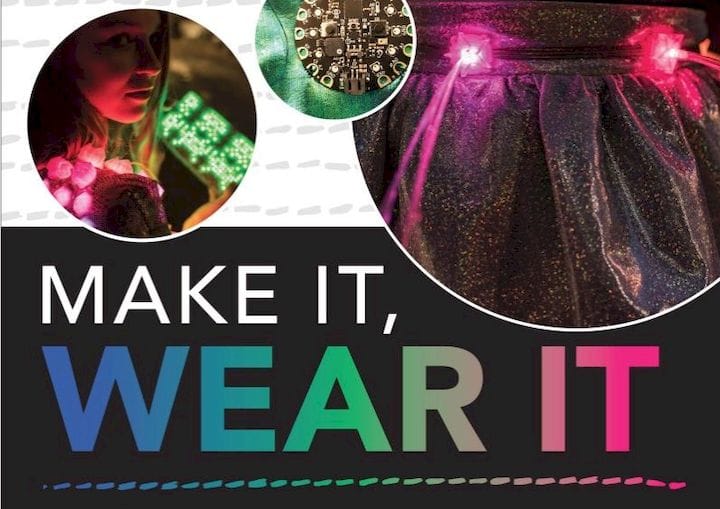![Make It, Wear It: Wearable Electronics for Makers, Crafters, and Cosplayers [Source: Amazon]](https://fabbaloo.com/wp-content/uploads/2020/05/image-asset_img_5eb0a7a12abce.jpg)
This week’s selection is Make It, Wear It: Wearable Electronics for Makers, Crafters, and Cosplayers by Shahrye Cohen and Hal Rodriguez.
While there are many 3D printing texts that talk a great deal about the technology or how to operate particular 3D printers and associated software, the bottom line is that 3D printers must, in the end, be used to produce something.
That goal often requires careful design and consideration of a number of factors. Knowing the “rules of the road” for making 3D printed objects in one domain does not necessarily set you up correctly for producing objects in a different domain.
There are always things to know within a domain.
This book thus focuses on a very specific application of 3D printing and making skills in general: Wearable Electronics.
The idea here is to identify a useful function that can be implemented using now-ubiquitous inexpensive electronic components and embed them in portable form within a wearable article.
Such projects are very often done simply for the fun of it. One particularly interesting application of wearable electronics is Cosplay, the act of creating a highly realistic and detailed replica costume of a well-known character. (That’s where the name comes from: “Costume”-“Play”).
Such projects could include any conceivable function, ranging from lights, audio or other complex functionality. By using a hidden smart controller, one can make components do semi-intelligent actions that could be the key to an incredible cosplay outfit.
The book begins with a long discussion of the typical materials and tools used to create wearable electronics, including stitching and sewing, 2D design, laser engravers, 3D design (with Tinkercad), and of course, 3D printing.
3D printing is almost an essential tool for wearable electronics, as the electronic components are always obtained without an enclosure. 3D printing enables the design and production of custom enclosures that can be fitted precisely to a person’s shape, or adapted to fit within existing clothing.
The book’s remaining sections are simply a list of interesting projects that cause you to execute with most of the described tools and materials. However, with each you will receive an actual wearable electronic item.
The projects include a standard section at the beginning that lays out the basics, including:
- What you will learn
- Files you will need
- Tools you will need
- Materials you will need
Then specific steps required to complete each project follow in an easy-to-execute manner.
The projects include:
- 3D-Embellished T-Shirt
- Fiber-Optic Fabric Scarf
- Fun Festival Hip Pack
- Solar Backpack
- Starlight Skirt
- Programmable Sewn Circuit Cuff
- LED Matrix Purse
If you are contemplating the design of a wearable electronic component, you may want to check out this book.
Via Amazon









